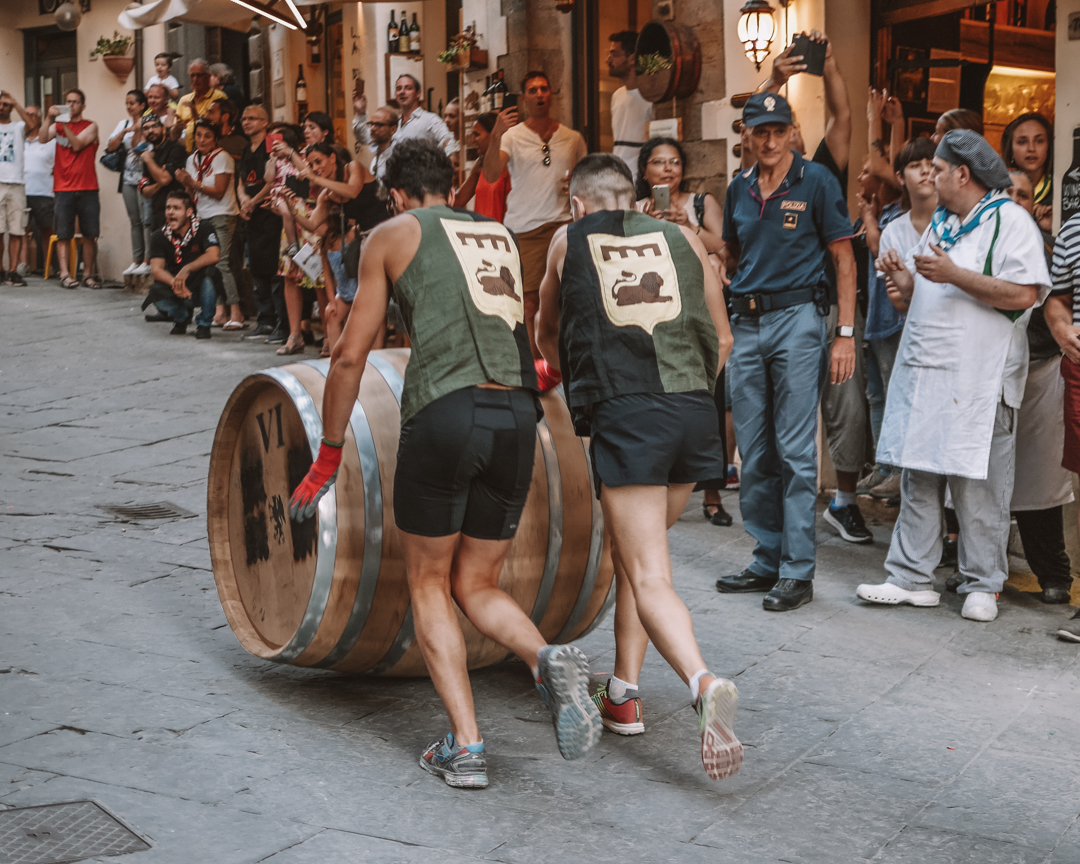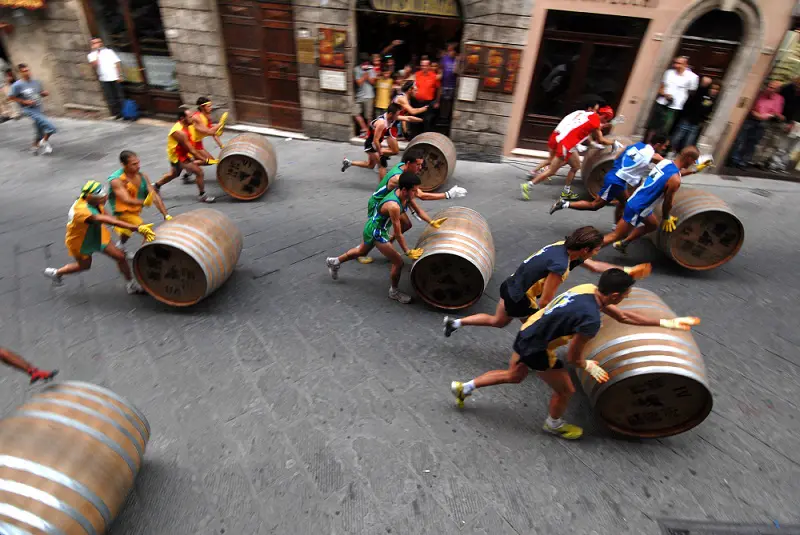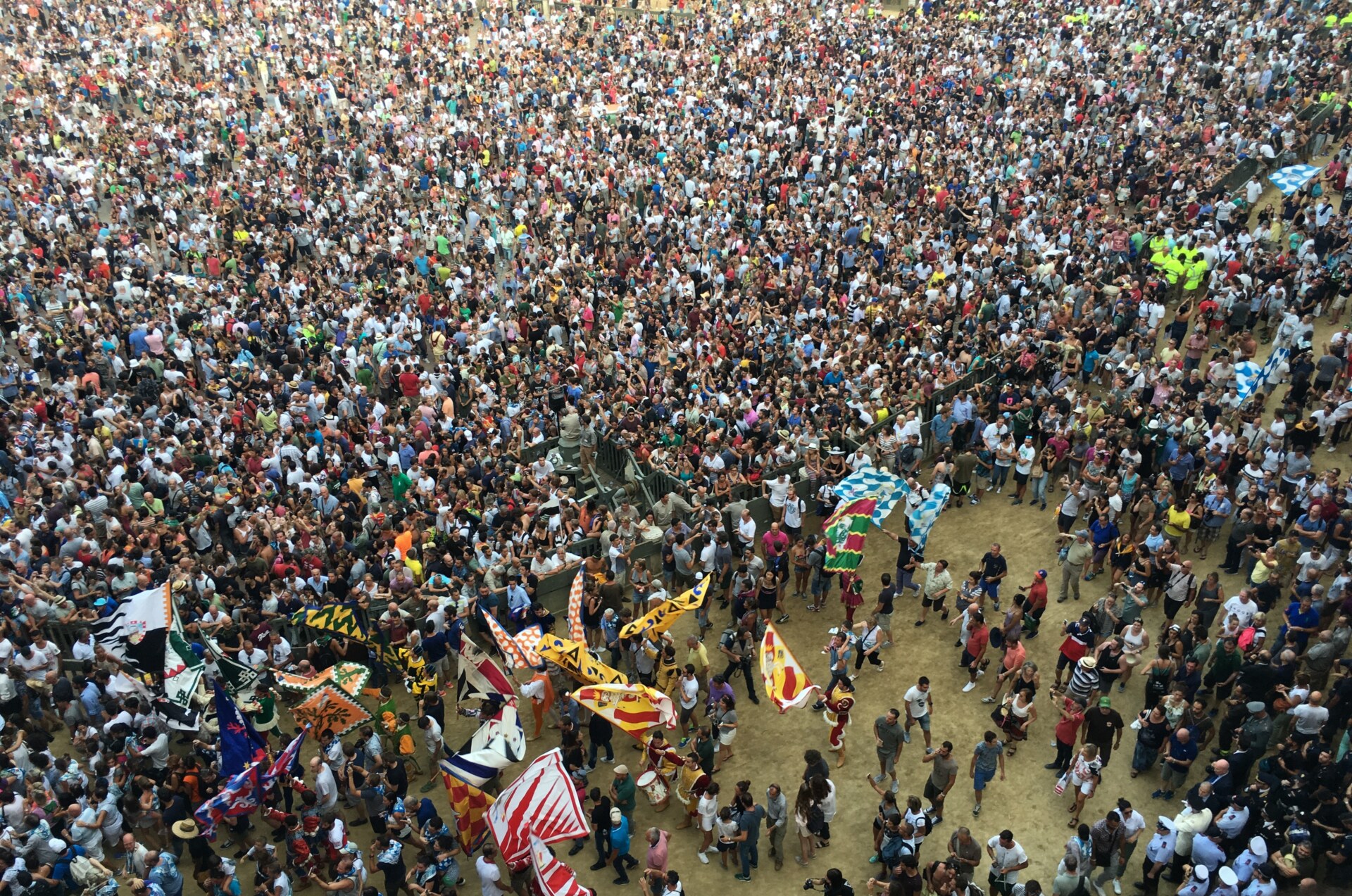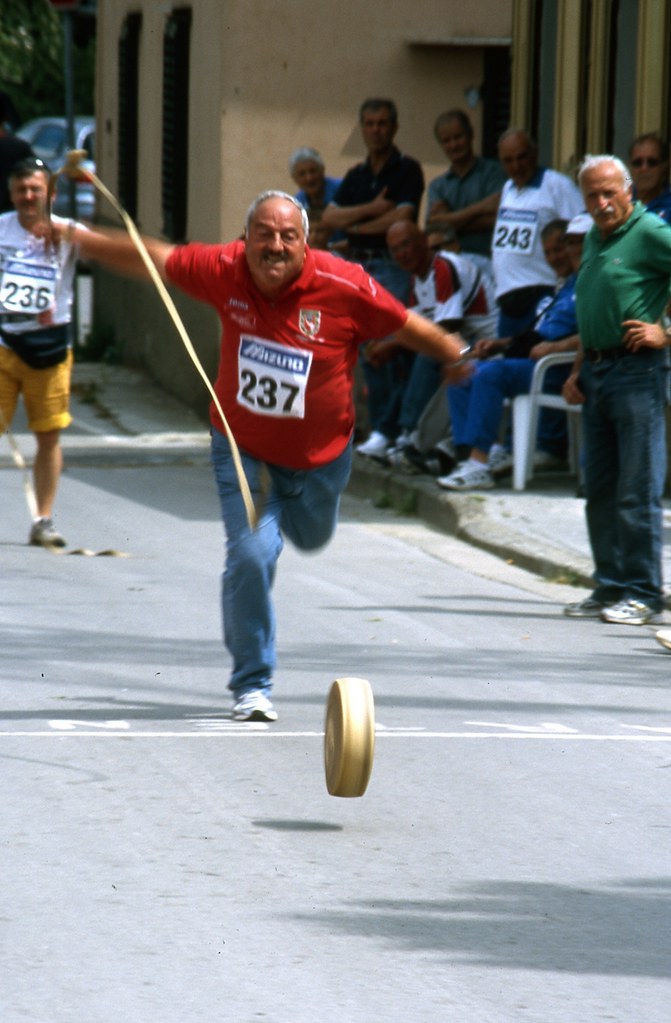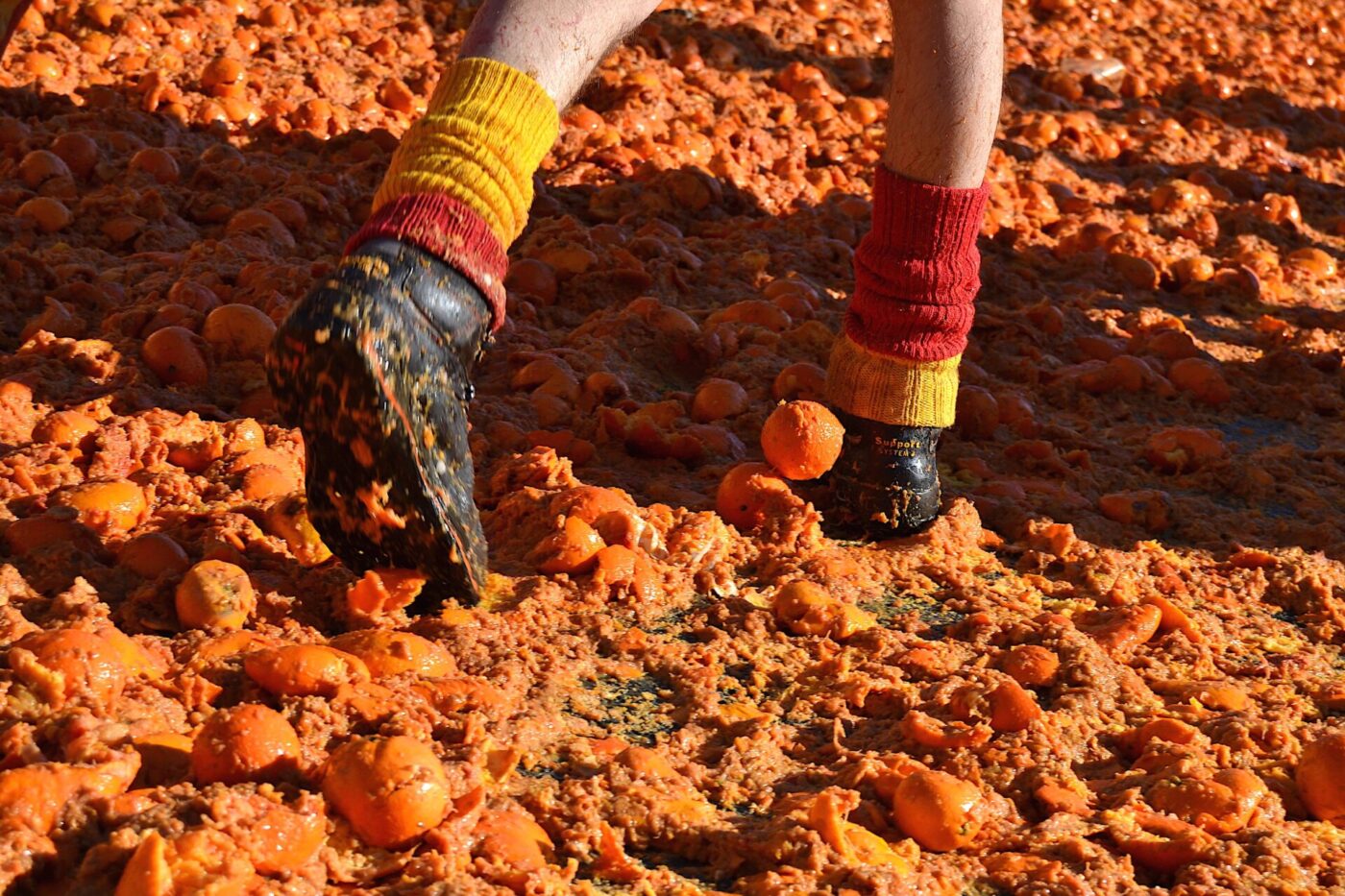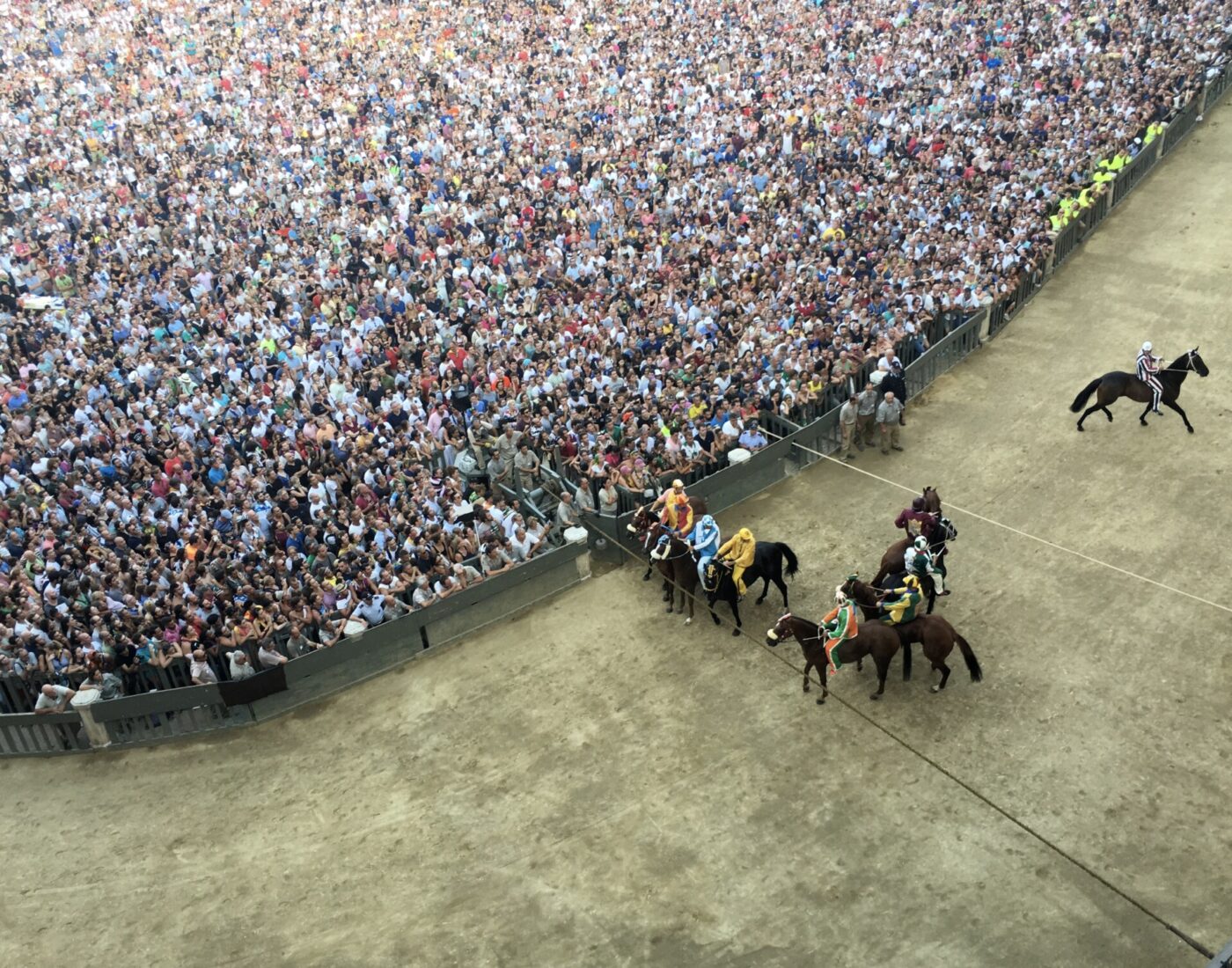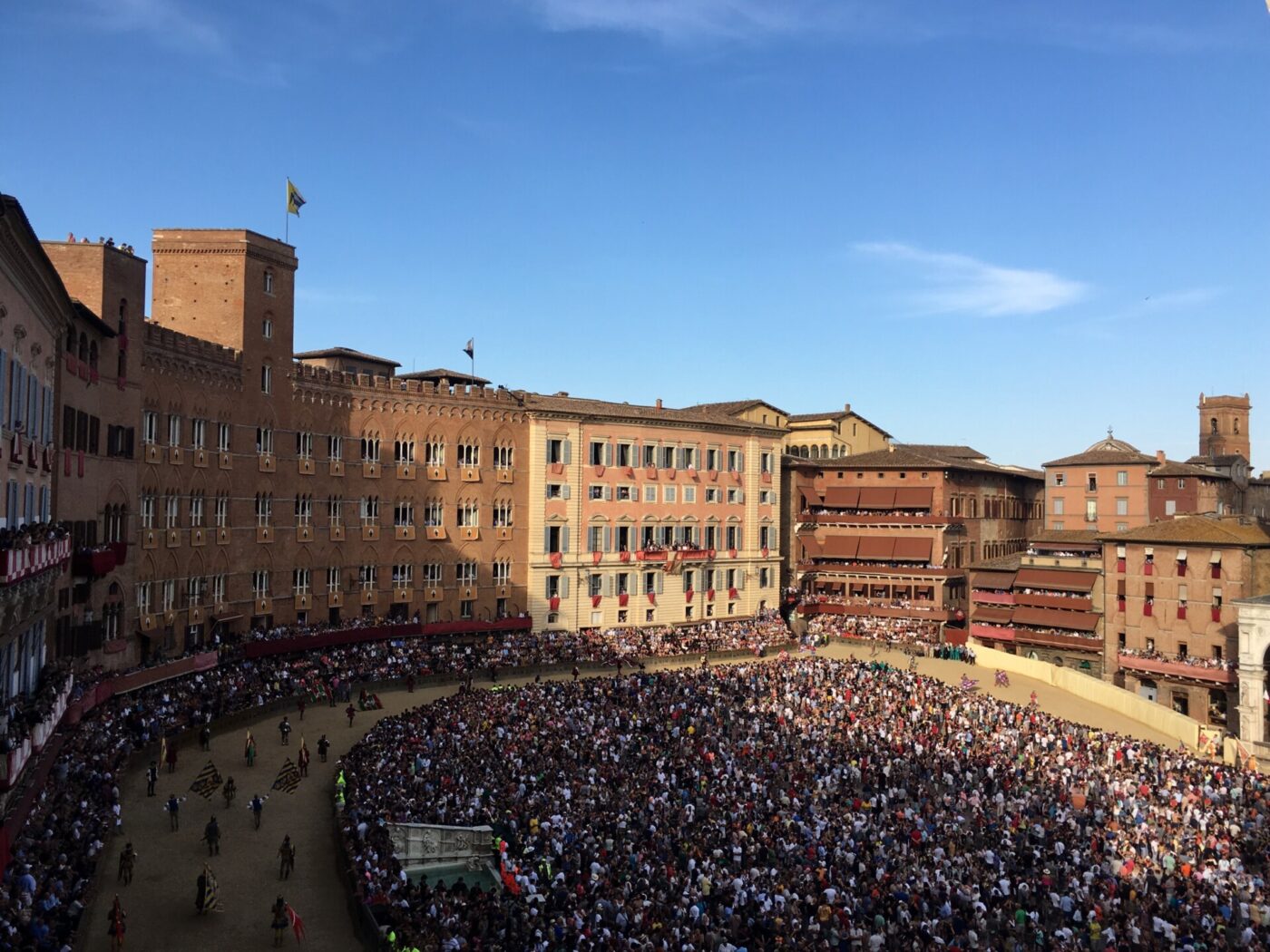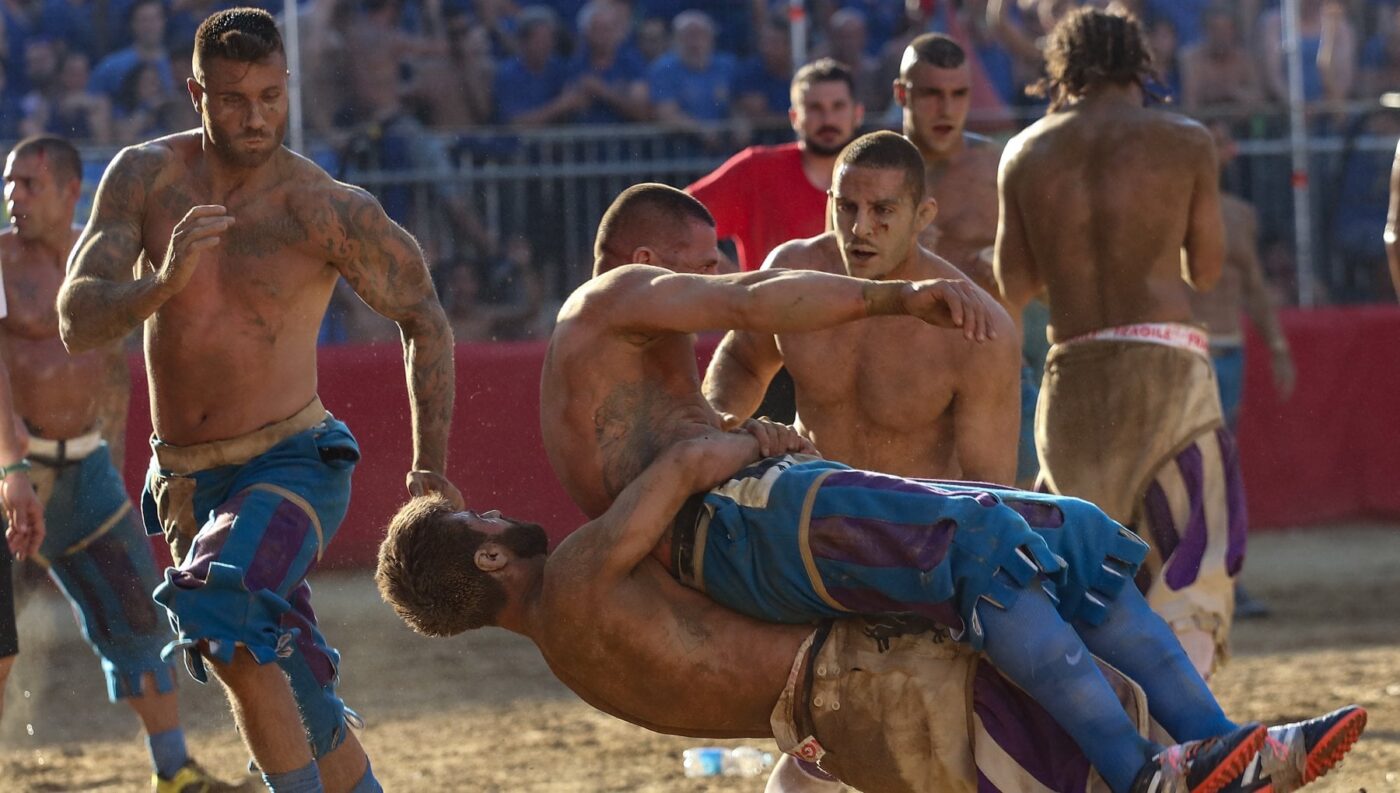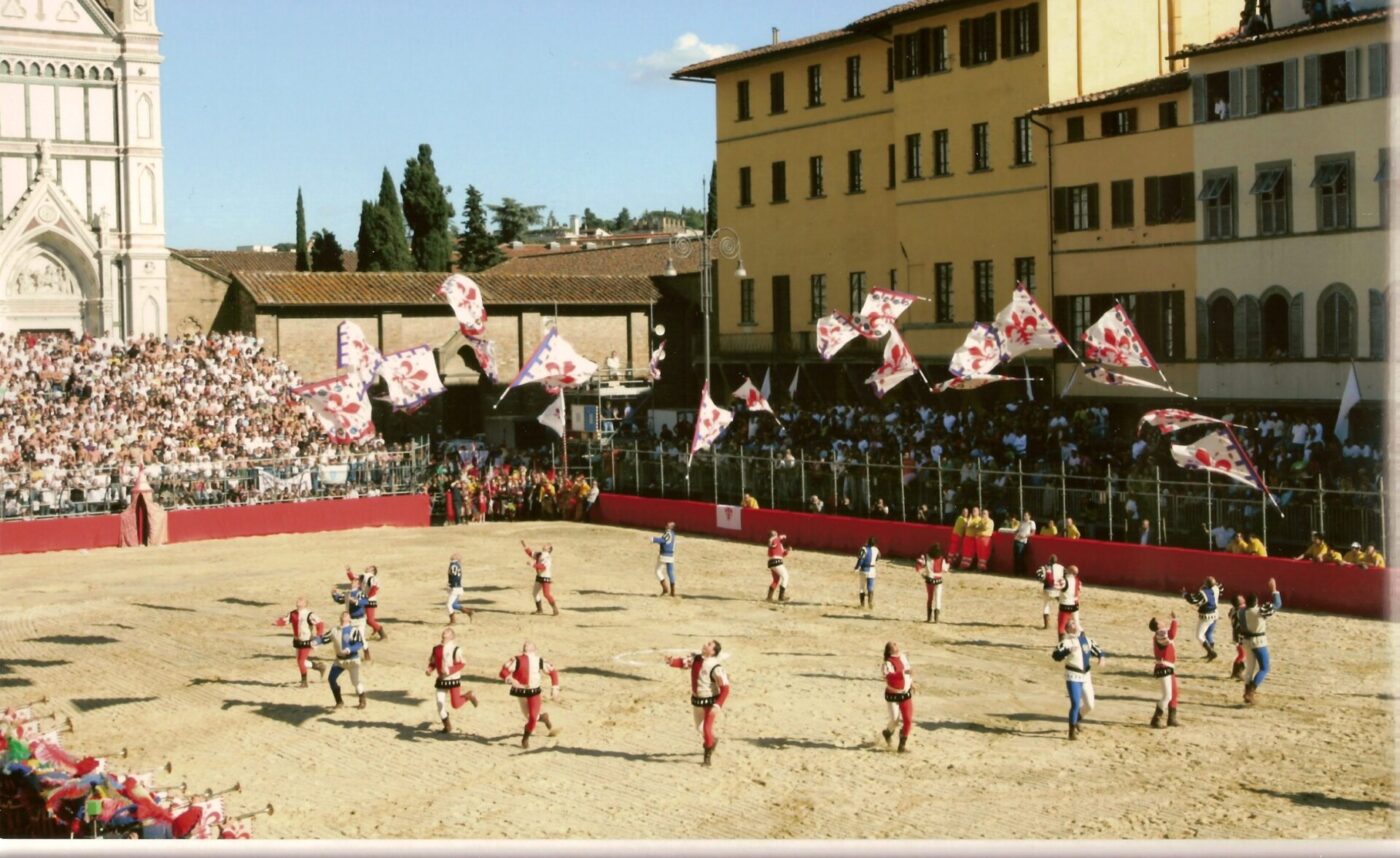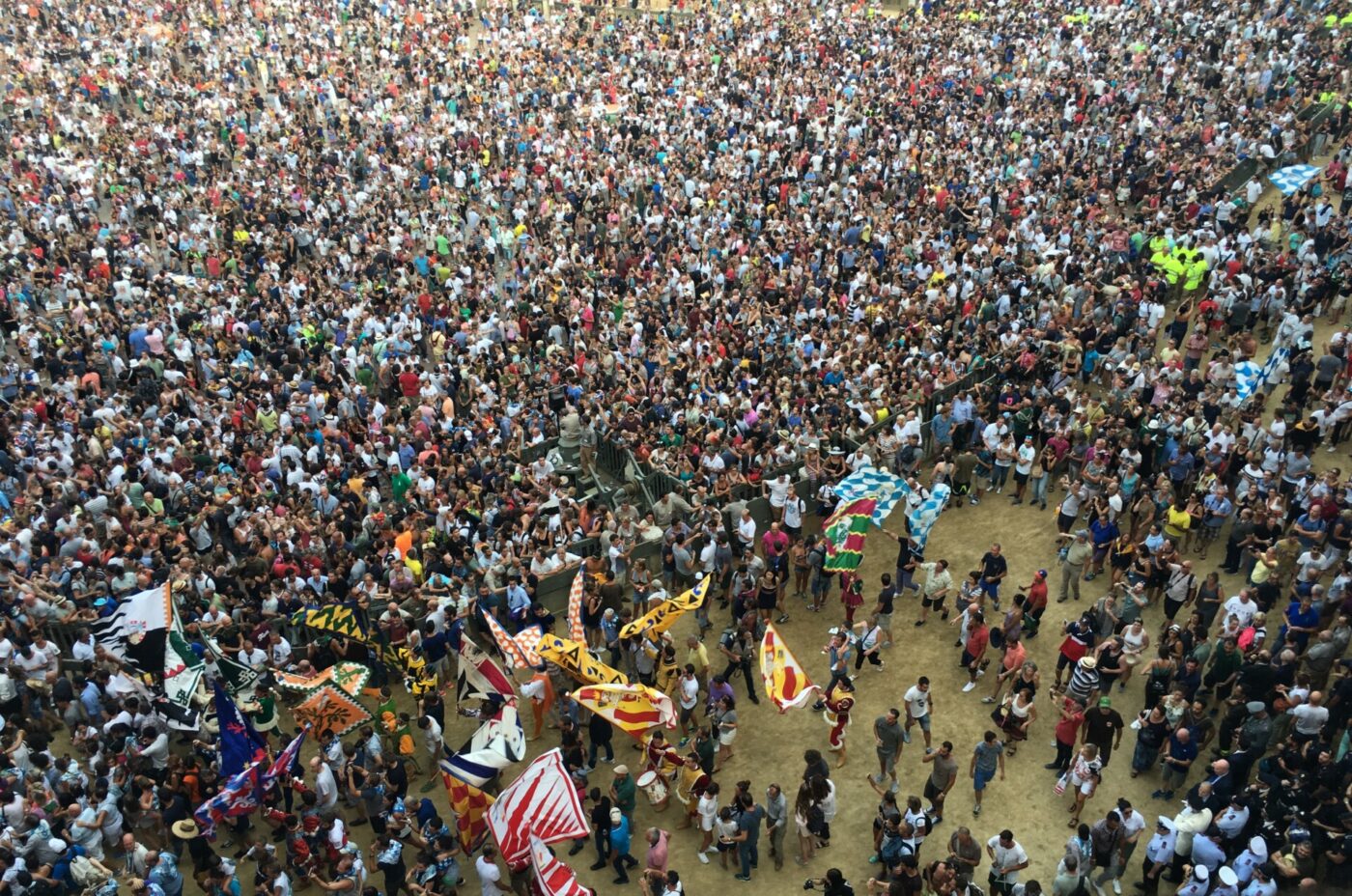Us Italians have truly taken this Italian proverb to heart, both during carnevale and anytime we throw a festa–chaos-filled days celebrated with cheese chases and food fights and a sport somehow more violent than rugby. Though it may seem like chucking oranges at your neighbor’s head is ruthlessness for the sake of ruthlessness, there actually is some sort of reason for it all: often said reasons are hyperlocal traditions that date back to medieval times. Contrade (neighborhood) teams compete against each other, fostering community relations by pitting one burly neighbor against another.
All in all, these feste are a testament to enduring Italian traditions and customs–most namely the ability to create and promote organized chaos. The more outlandish, the better. For a true glimpse into the chaos of Italian culture, these five feste should be at the top of your must-see list (although we recommend standing at least three meters away, and kids, don’t try any of this at home).
Battle of the Oranges
In Ivrea, Piedmont, residents celebrate carnival with Italy’s largest and most violent food fight: The Battle of the Oranges. In February, nine teams of aranceri (orange-throwers) have their own fighting arenas across the city, and they engage in battle–with oranges as the sole ammunition–against masked figures who ride through on horse-drawn carriages.
Origins of the battle can be traced to the 12th century, when the residents of Ivrea burned down the palace of their duke after he attempted to attack the miller’s young daughter on her wedding night. Visitors are welcome as long as they wear a berretto frigio (a symbolic red hat that makes you look like Papa Smurf) and stay away from the center of the conflict. Or, if you’re feeling audacious, you can apply to be an aranceri, but be warned: the battle is guaranteed to leave you bloody, bruised and covered in the same orange pulp that is forever squished deep into the cobblestones.
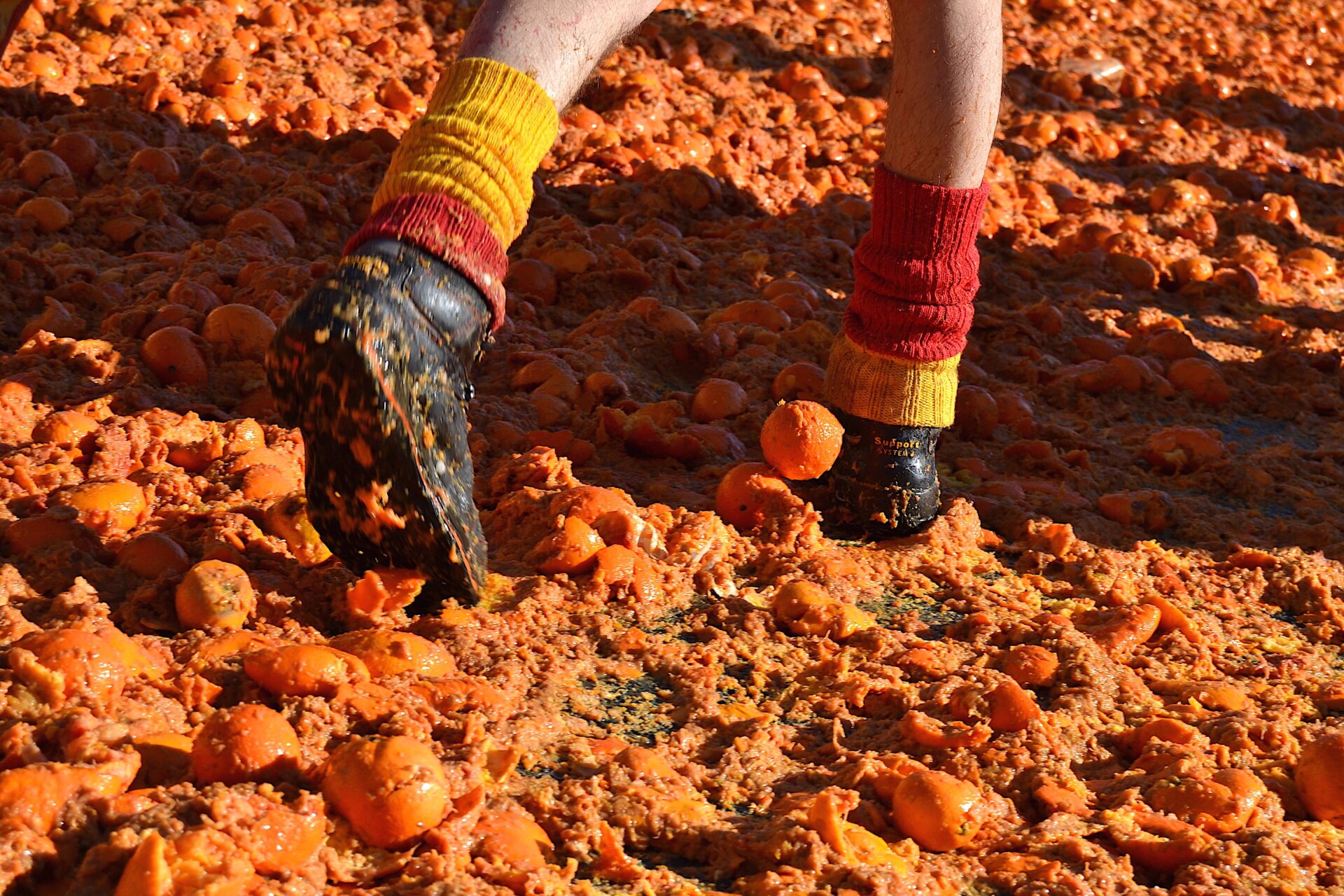
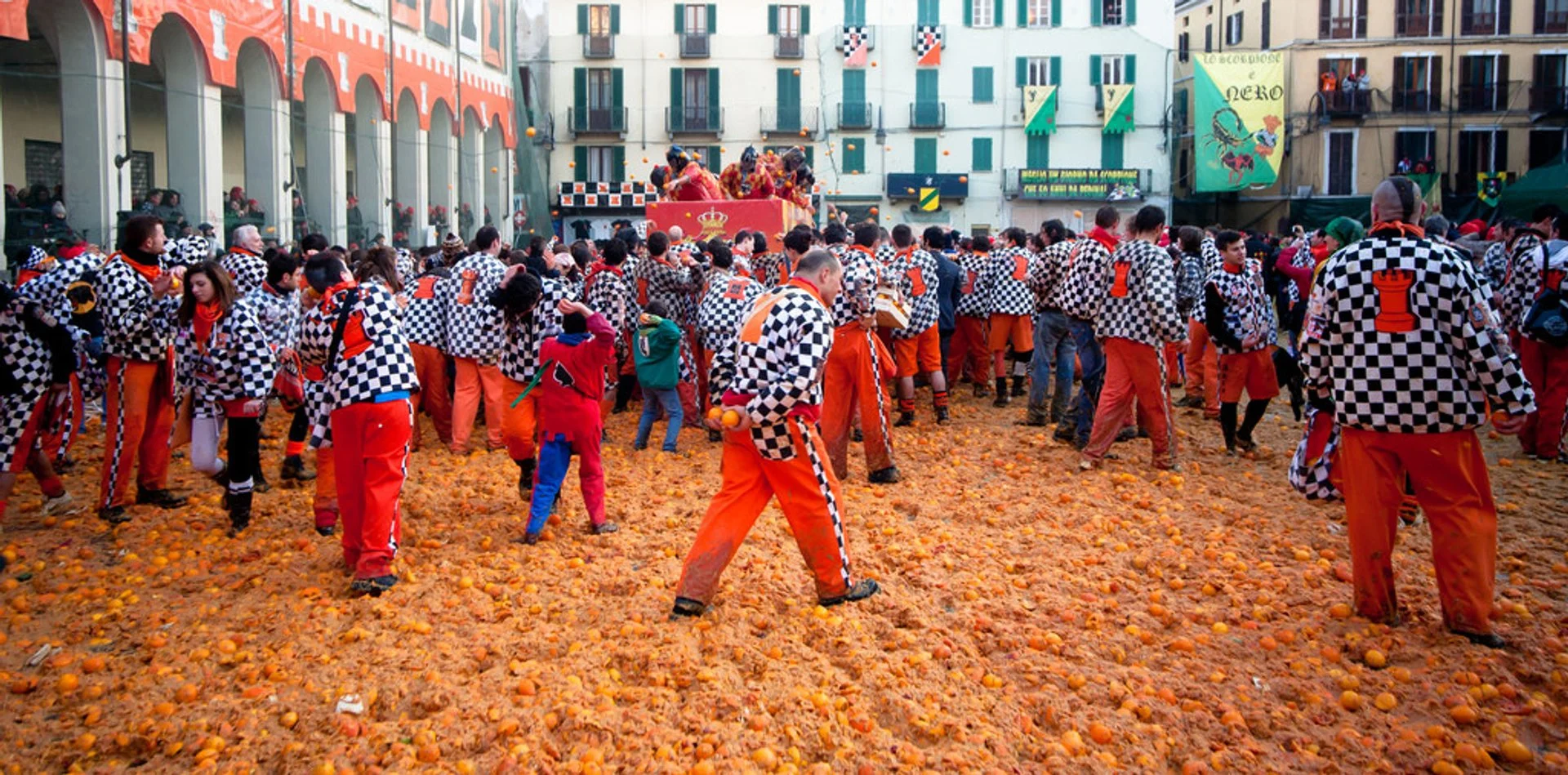
Ivrea Orange battle; Photo by Alessio Ferreri
Palio di Siena
The most well-known feste in Italy, the Palio di Siena could win an award for the most chaos created in the smallest amount of space. Biannually, on July 2nd and August 16th, Siena’s Piazza del Campo (with a circumference of only 333 meters) is crammed with thousands of people who’ve arrived at 10 AM to see the frantic horse race. Right before 7 PM (yes, the spectators have waited that long in the broiling sun without a water fountain or bathroom), the horses and jockeys (riding bareback!) enter the square to the sound of fireworks, and the carriera (race) begins: a thundering 90 seconds and three clockwise laps around the piazza later, there’s a winner… and probably a few riderless horses, who technically can still win the race even without their jockey.
There 17 contrade of Siena, each of which rally behind their emblem: eagle, caterpillar, snail, owl, dragon, giraffe, porcupine, unicorn, she-wolf, goose, tortoise, wave, tower, ram, forest, panther and shell. Due to the aforementioned small space, only 10 compete at a time, based on a random selection, and the heated rivalries seem to date back to the Middle Ages like the race itself. The night before, the horses sleep in one of their district’s churches to receive divine blessings and protection (and to prevent the horses from being drugged).
The winning contrada receives more than just the drappellone, a cherished cloth banner trophy displayed in their church: every member of the triumphant has the honor of attending the exclusive cena della vittoria, a massive victory dinner of Tuscan classics and free-flowing wine.
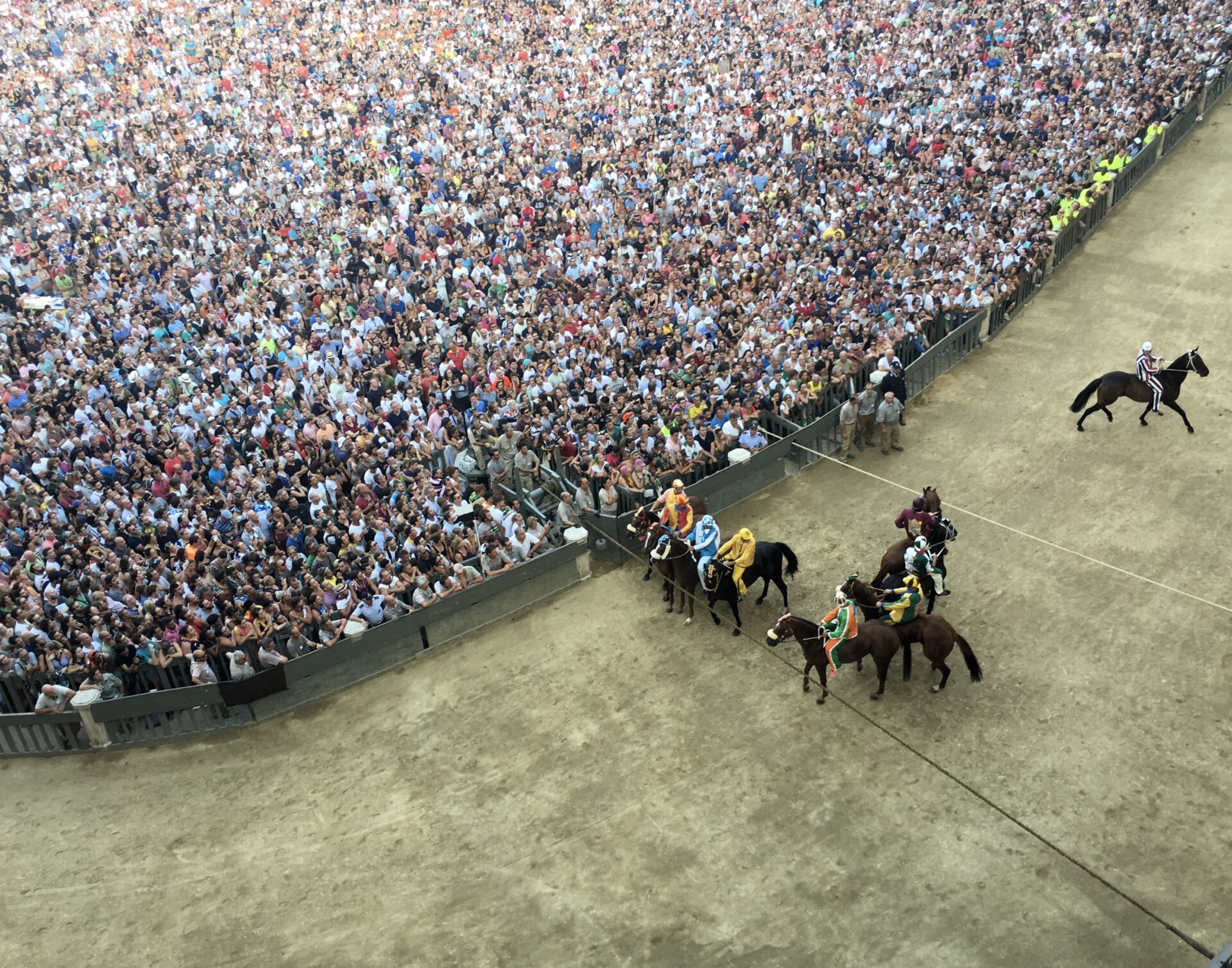
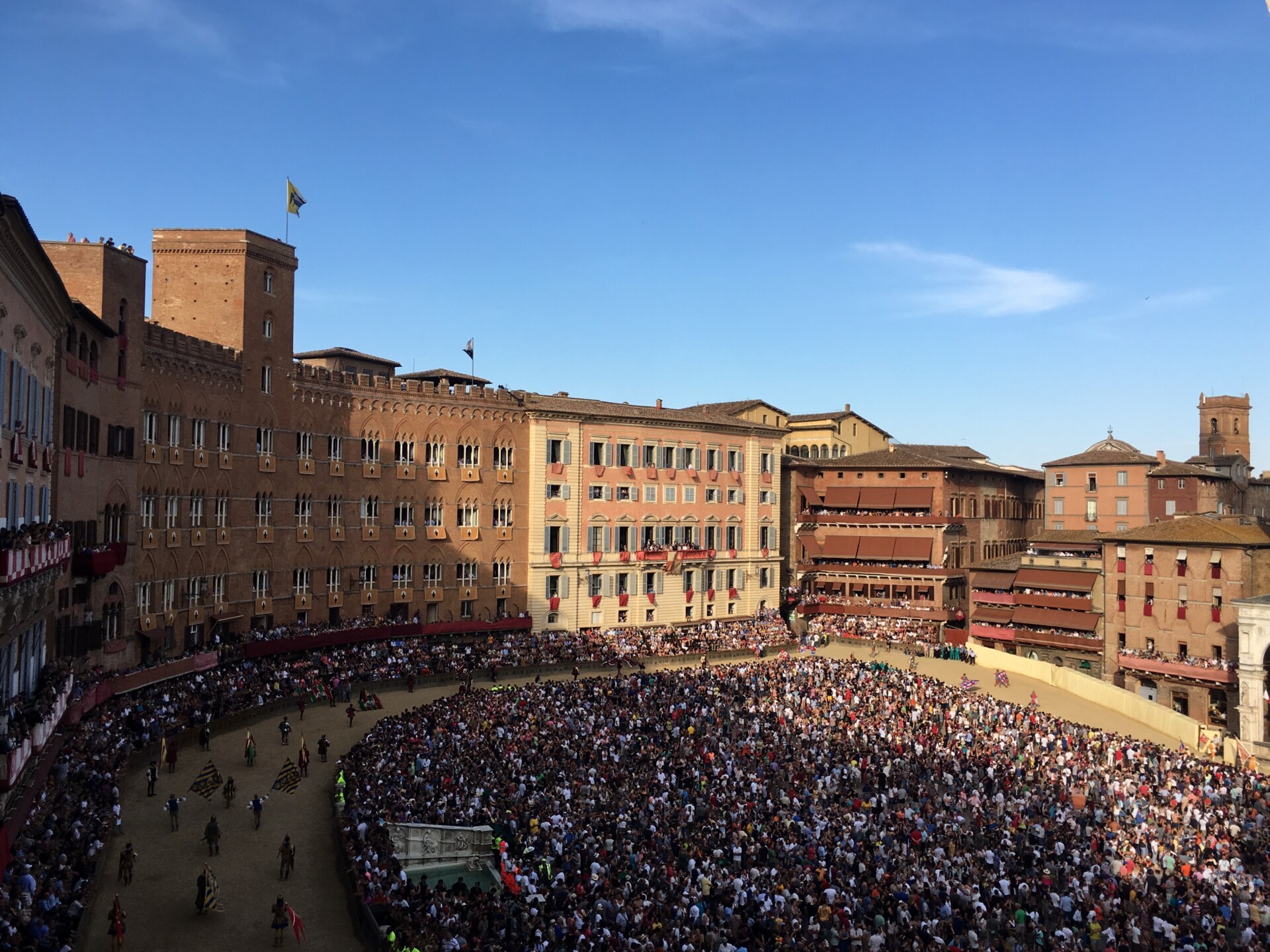
Calcio Storico
On June 24th, Florence’s biggest square, Piazza Santa Croce, fills with 50-100 tons of sand and transforms into an arena hosting every mother’s worst nightmare: the violent sport of calcio storico. Meaning “historical football”, this 16th-century game is the hate child of soccer, rugby, wrestling and martial arts techniques. According to the official Renaissance rulebook, the game allows for almost anything–except substitutions.
There are four teams, each based on a color, from Florentine neighborhoods: Azzurri (Santa Croce), Bianchi (Santo Spirito), Rossi (Santa Maria Novella) and Verdi (San Giovanni). Two teams of 27 players, who’ve been training for years, compete in 50-minute long matches; they score points by throwing or carrying the ball into the opposing team’s net or by defending their own net–all by any physical means necessary. Once a player is down, he’s ignored by his teammates, who are busy clutching, kicking, punching in a vicious struggle for dominance.
The game is so brutal that players almost always end up in the hospital or even in court, which prompted the match to be canceled in 2007 (and again in 2014) due to a staggering 97 criminal proceedings and 21 serious medical reports from the two previous years.
To be a calcio storico player, you must be born in the neighborhood for which you compete, and we’ve heard stories, albeit unsubstantiated, of former players rushing their in-labor wives to the corresponding hospitals–no matter how far from the city they actually live.
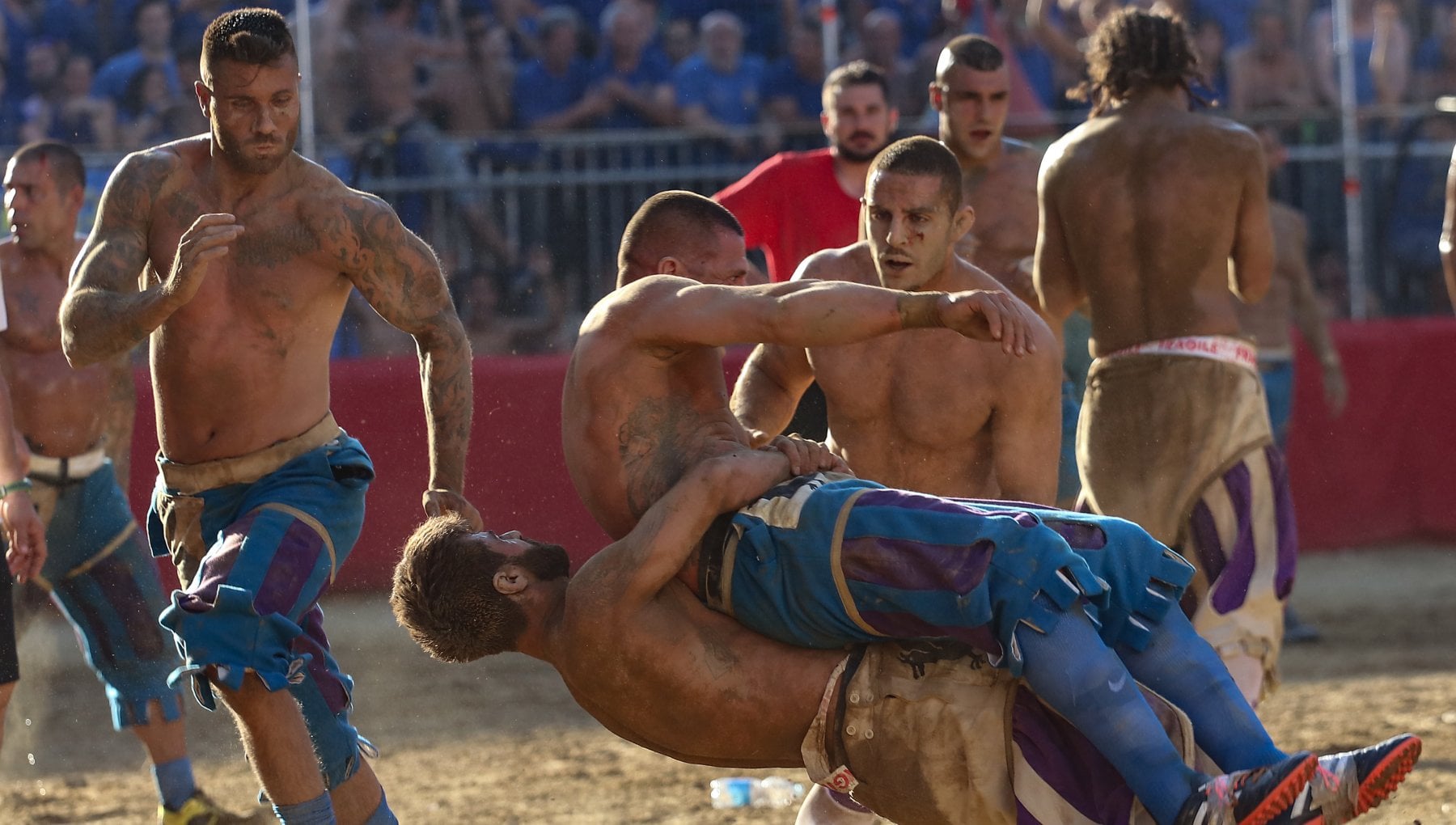
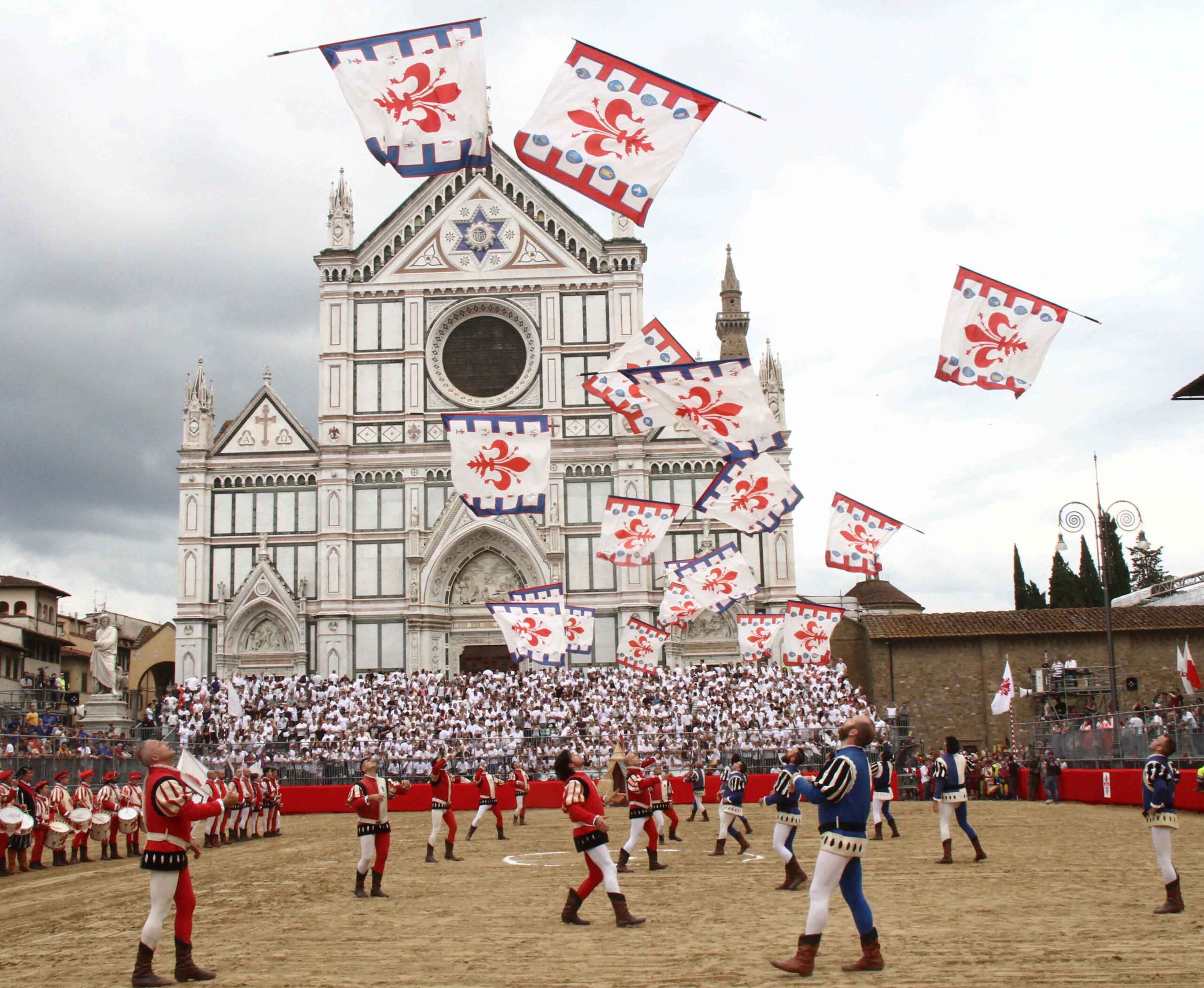
Photo by Umberto Visintini/New Press Photo
Tiro della Forma del Formaggio
If you’re ready to roll, head to Pieve Fosciana in the Garfagnana region of Tuscany for the Tiro della Forma del Formaggio. During this annual festival (that has been celebrated since 1400), a big wheel of pecorino is flung down a steep hill: participants race behind it in hot pursuit, hoping to catch the cheese before it reaches the bottom. Historically, success rates are low, as the cheese reaches speeds of 70 km/h (43 mph). Participants know it’s really more about the thrill of the chase and the bites of the crumbly cheese everybody gets to try once the wheel stops rolling. In Medieval times, the tradition marked the end of the winter grazing season and the arrival of spring. If you aren’t up for hurtling down a hill, you can chase cheese at one of the local Tuscan food stands. Running for formaggio? That’s a festa we can understand.
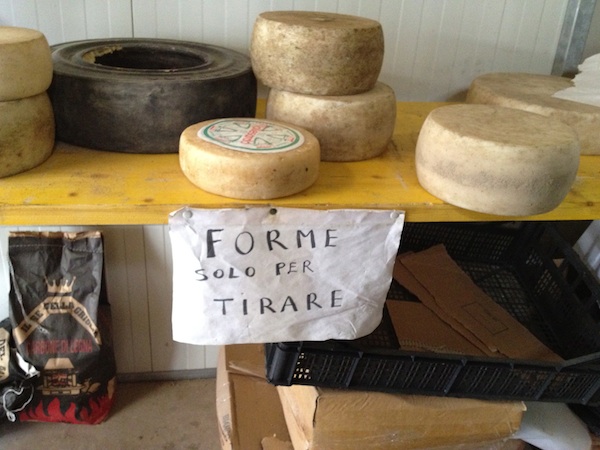
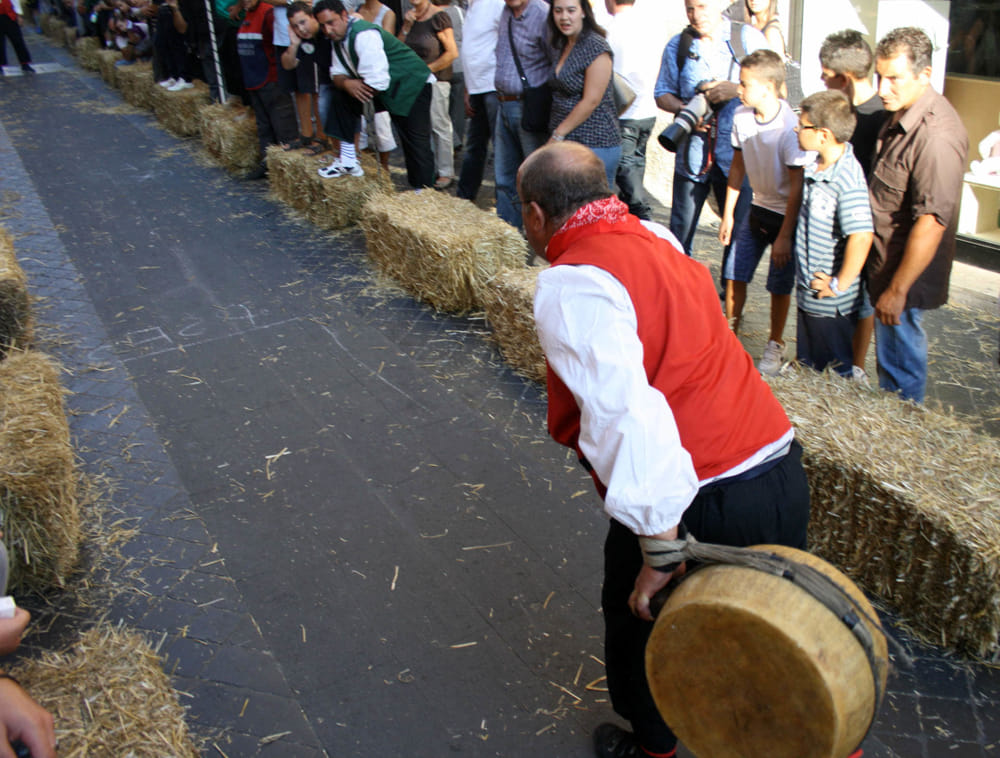
Bravìo of Montepulciano
Held annually on the last Sunday of August, the Bravìo festival in Montepulciano is barrels of fun. The town’s eight districts send their brawniest representatives in pairs to the base of a steep hill, where the competition begins: the duo push 80-kg wine barrels uphill for one kilometer–bouncing off the sides of the narrow, winding street–to the town’s central piazza. The result is approximately ten minutes worth of mayhem at the hands (and toned arms) of men in short shorts and team-color muscle tanks who’ve trained months for this moment. The name “Bravìo” is derived from the Latin word “Bravium”, which indicates the coveted prize that awaits the victorious pair: a painted cloth depicting St. John the Beheaded, in honor of whom the festival is held. The rest of the day is also quite fun: the festival’s 14th-century origins as a horseback race are celebrated through parades, music, traditional costumes and, as always, food.
